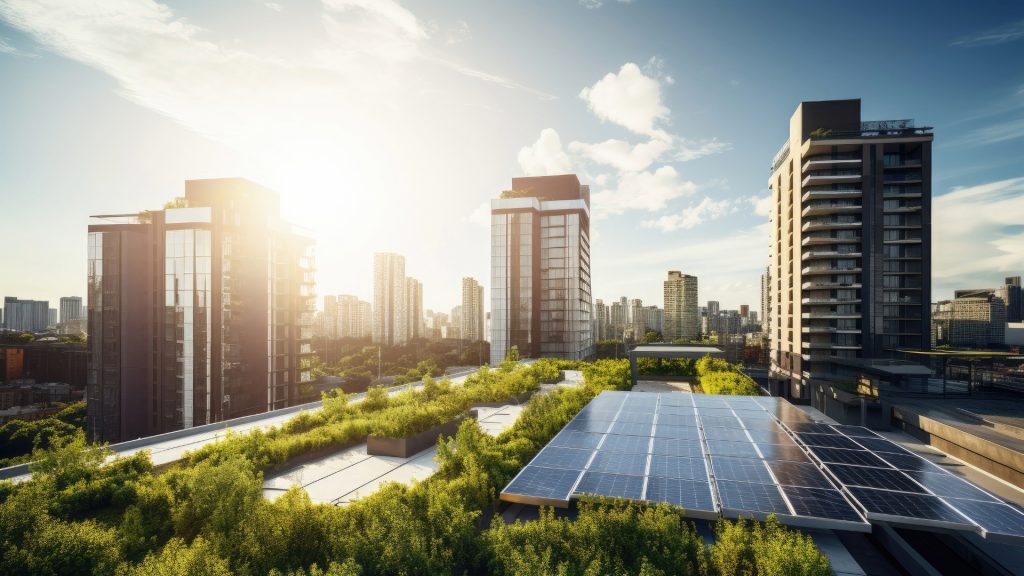Principles and Practices for Greener Urban Spaces
As urban populations swell, Pinacore is addressing the crowding and pollution challenges by championing sustainable land development. By blending urban ecology with green urbanism, we’re committed to creating more habitable, eco-friendly spaces within the cities of the Southwest.
This guide will navigate through the essential elements of sustainable urban land development—a specialty of Pinacore as a real estate developer—and how these practices can be applied globally.
Urban Ecology
At the core of Pinacore’s sustainable approach is urban ecology—the study of life’s interconnectedness within metropolitan environments. In the context of southwest land development, this translates to developments that are in tune with the natural world.
Our strategy minimizes the environmental footprint by preserving green spaces, curbing pollution, and fostering biodiversity. By weaving these urban ecology principles into our development framework, Pinacore is redefining city living for a greener tomorrow.
Green Spaces
Central to Pinacore’s urban ecology ethos is the conservation of green spaces in our cities. These areas are more than just havens for flora and fauna—they’re vital for human health and community well-being. Green spaces serve as natural lungs, reducing air pollution, dampening noise, and tempering urban heat islands.
As a leading real estate developer, Pinacore prioritizes the integration and maintenance of these pockets of tranquility in our southwest land development projects, ensuring that urban growth and environmental health go hand in hand.
Sustainable Transportation
The development process of modern cities increasingly recognizes the role transportation plays in urban pollution and greenhouse gas emissions. To pivot towards a more sustainable future, it is essential to champion alternative transportation modes such as walking, cycling, and public transit.
Project managers and urban planners are at the forefront of designing pedestrian-friendly infrastructures and bike paths, implementing car-free zones, and enhancing public transportation systems. These strategies are pivotal in transforming types of land usage and reducing car dependency, ultimately leading to improved air quality and a diminished urban carbon footprint.
Green Urbanism

The ethos of green urbanism lies at the heart of our development process. This approach prioritizes environmentally-friendly and socially-responsible urban planning.
It encompasses a wide spectrum of sustainable practices, seamlessly integrating them into every aspect of urban development, from the architectural design of properties to the civil engineering of transportation systems. Embracing green urbanism enables cities to minimize their environmental impact while fostering healthier, more resilient communities.
Sustainable Building Design
In the realm of sustainable urban land development, the architectural blueprint of a building is fundamental. Creating environmentally-friendly buildings involves using eco-friendly materials, choosing energy-saving solutions, and following strong green building practices. These steps are important for ensuring that buildings are in harmony with the environment.
Eco-friendly materials help reduce the impact on the environment. Energy-saving solutions help conserve resources and reduce energy consumption. Green building practices promote sustainability and minimize negative effects on the environment. Such designs not only reduce the ecological footprint of types of properties but also enhance the well-being of its occupants by ensuring ample natural light and improved air quality.
Community Engagement
The longevity and success of sustainable urban land development hinge on active community engagement. Residents are involved in the planning process. This can include buying land, deciding what to do with undeveloped land, and planning for the community’s long-term growth. Residents play a key role in these decisions.
They help shape the future of their community. Through public forums, surveys, and open dialogues, communities can have a say in stormwater management, types of land development, and the broader vision of their living spaces. Such participatory approaches ensure that the developmental trajectory aligns with the community’s core values and needs.
By incorporating principles of urban ecology and green urbanism, cities can create more sustainable and livable spaces for their residents. By following this guide, cities can take a step towards a greener and more environmentally-friendly future.

